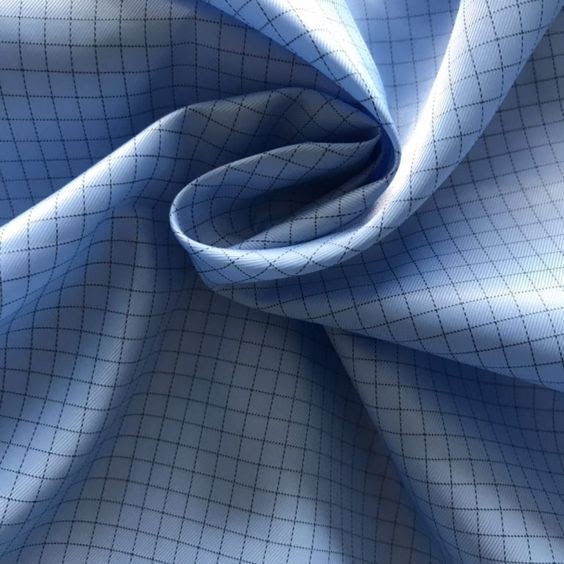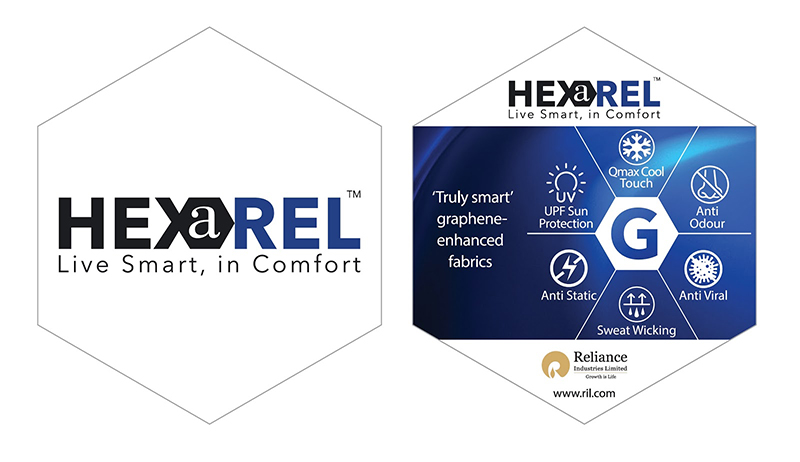
Category: DYES AND CHEMICALS
Country: India
Anti-Static Finish – Improving comfort in your Sportswear
Published by Positex on April 24, 2021
Have you ever had the discomfort of a clinging feeling or crackling noise from your clothes? Well, this is exactly what a static in clothes feels like.
How do fabrics develop static electricity?
The static electricity on fabric occurs as a result of rubbing or friction between the cloth and skin. You may remember your childhood science experiments of rubbing a Balloon to the wall, or Rubbing a comb to the hair. Static electricity is present on the surface of the material and some electrons are also present in the atmosphere. Some of these electrons are either negatively charged, while others are positively charged. Electrons with the same kind of charge repel each other; while oppositely charged electrons attract each other. When the opposite electrons meet, it’s a zap: They destroy everything around. But sometimes these electrons are not strong enough to zap, that is when they cling. The static cling is generally worse in winters as compared to summer months due to the dry skin. They form easily when the air is dry or when it’s humid.
How does the static in clothes affect the wearer?
The forces that cause lightning storms are the same forces that develop static cling in clothes. You might have experienced those slight electric shocks, while
touching a doorknob (or something else made of metal), which has a positive charge with few electrons. For this very reason, no one would want any form of electricity hovering among their clothes. In certain occupational environments, where people handle combustible materials, the static accumulation may also result in spark, which may pose a fire or explosion hazard. To avoid these damages, before these charges build-up, the electrical charges must be led away. It can be achieved by providing an anti-static finish to the fabric.
What kind of fabrics generally produce static?
Characteristically, all fabrics which are not good conductors and are hydrophobic (do not absorb moisture) are prone to producing high static electricity. Eg.
Polyester, Silk, Nylon, Wool, Fur, Leather and Acrylic. Cotton by nature is conductive, so has good Anti Static properties.
Due to the many benefits of Polyester clothing, it has gained usage in the last 2 decades. Also it is one of the most common materials used in the field of Sportswear due to its Quick Dry properties, wrinkle-free, breathable, durable, strong yet light-weight. With their remarkable insulating properties, polyesters make the best choice for both hot and cold weather.
However, polyester is also sensitive to static electricity especially when it comes in contact with dry skin and hair, they are charged positively. Even for Outerwear/jackets Polyester and Nylon are preferred fabrics, and due to their Water Repellent treatment, the Static charge generation is very high. To dispel the electricity from polyester i.e., to make them anti-static the conductivity of the cloth needs to be improved to an acceptable level.
How is the Static eliminated from clothing ?
Electrical conductivity or anti-static is often a precondition for many fabrics whether in general usage, or for specific industrial applications. It can be brought
out by reducing the charge, increasing the surface conduction or converting the fibre into hydrophilic (moisture absorbing). In current times, to address this problem, an anti-static finish is done at the Fabric production stage itself, to reduce the charge in the fabric. There are chemical additives that prevent the accumulation of electric charge on the surface of the material by providing electrical conductivity to it.
Today many chemical companies offer anti–static additives that can be used, depending on the level of static protection needed and how long the anti-static effect needs to last. Normally, it is combined with the other additives in the finishing bath. We must certainly know that as these are chemical finishes done on the fabric during dyeing stage, these finishes may last anything from 30-50 washes. The moisture regain plays a crucial role in static dissipation. The more moisture the fabric can retain the less will be the static accumulation. From the below grid, you can see a comparison of various fibres, with respect to their Moisture regain and Electrical Resistance (without any treatment):
| Fibre | Moisture Regain | Resistance |
| Viscose | 12 | 7ohms |
| Cotton | 8 | 7ohms |
| Nylon | 4 | 12ohms |
| Acrylic | 1 | 14ohms |
| Polyester | 0.4 | 16 ohms |
| Ohms* Unit of electrical resistance | ||
Based on an understanding of the above, it is clear that any Polyester fabric that is not having Anti Static finish, would lead to high discomfort due to clinging to
the body, and electrical charge in the garment.
What are the other solutions?
In certain Industrial applications, where the Static can cause a high risk, Carbon Yarn is used along with polyester in the fabric due to its high conductive
properties. This can provide a permanent Anti Static protection in such fabrics, but due to the checkered black carbon yarn on the fabric, it does not find much usage in general wear.
 Due to the amazing properties of Carbon with respect to functional clothing, recent researches on Graphene have enabled certain companies like Reliance Industries Ltd. to offer patented HexaRel technology to the market. These Graphene enabled fabrics have very good Anti Static properties, and at the same time provide other functional benefits like Wicking finish, Q Max Cool, UPF, Anti Microbial, etc. We expect a growth in the usage and acceptance of this technology in future specially in the Sportswear industry.
Due to the amazing properties of Carbon with respect to functional clothing, recent researches on Graphene have enabled certain companies like Reliance Industries Ltd. to offer patented HexaRel technology to the market. These Graphene enabled fabrics have very good Anti Static properties, and at the same time provide other functional benefits like Wicking finish, Q Max Cool, UPF, Anti Microbial, etc. We expect a growth in the usage and acceptance of this technology in future specially in the Sportswear industry.
 Testing of Anti Static function in fabrics ?
Testing of Anti Static function in fabrics ?
Anti Static properties in fabrics can be tested using any of the following methods :
1. Surface Resistance of Fabric (EN 1149-1 :2006) : The maximum acceptable resistance specified is ≤2.5× 109 ohm measured on at least one surface.
2. Electrostatic Clinging Of Fabrics : Fabric to Metal Test
( AATCC TEST METHOD 115-2005 ) : The average time required to decling the metal object with the tested fabric should be 0 min.

—————————-
Positex, believes that today’s Fabrics need to be Functional as well. Specially for applications like Sportswear, Activewear and Outdoor wear, where you are trying to give your best.
For this most of our fabrics are treated with Anti Static finish, to provide comfort and safety to the wearer. Looking at the benefits of HexaRel, Graphene enabled
fabrics, which uses a Carbon based finish on the fabric to provide multiple benefits, we are increasing the use of this patented technology on more of our sportswearand active wear fabrics.
Courtesy: https://www.positex.in/blog/anti-static-finish-improving-comfort-in-your-sportswear/
Copyrights © 2025 GLOBAL TEXTILE SOURCE. All rights reserved.